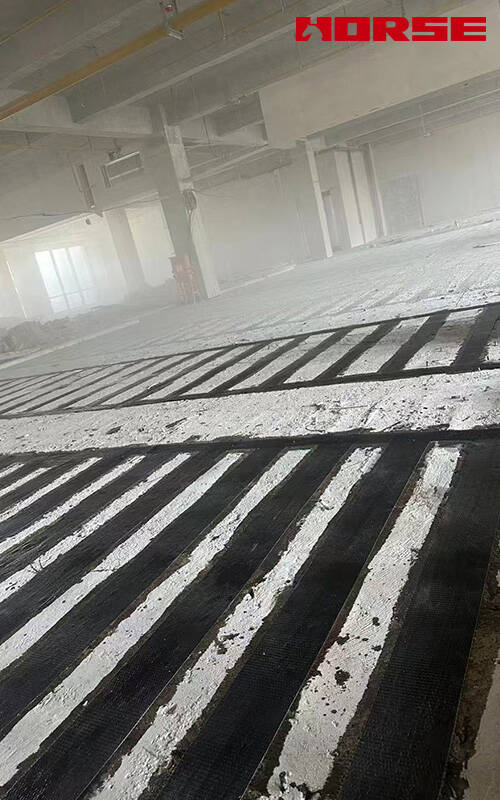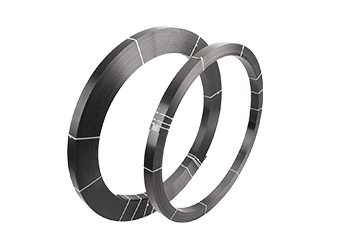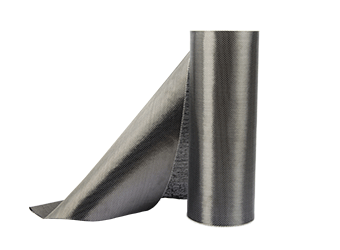Solutions
Horse Construction offers full range of structural strengthening materials with technical supports, documentation supports, products supports, project supports.
The core position of carbon fiber reinforced floor slab is the lower part, and in special cases, it may assist in reinforcing the upper or side parts.

The core position of carbon fiber reinforced floor slab is the lower part, and auxiliary reinforcement of the upper or side is only required in special stress scenarios. The specific selection needs to be determined based on the stress characteristics, crack distribution, and usage requirements of the floor slab. The detailed explanation is as follows:

1、 Reinforce the lower part of the floor slab (bottom of the slab)
This is the most common and widely used scenario of carbon fiber reinforcement in floor slabs.
1). Reinforcement principle
The floor slab will undergo bending deformation under vertical loads such as furniture, personnel, equipment, etc. The lower part (tension zone) bears tension, while the upper part (compression zone) bears pressure. The tensile strength of concrete is very low, mainly relying on internal steel bars to resist tension. When the load increases or the bearing capacity of the floor slab is insufficient, the steel bars may reach the yield strength, and cracks may appear in the lower part of the concrete, leading to excessive deflection or even damage of the floor slab.
Attaching carbon fiber cloth to the lower part of the floor slab with specialized structural adhesive is equivalent to adding high-strength and high modulus "external steel bars" in the tensile zone. Carbon fiber cloth can withstand enormous tensile forces, thereby sharing the tension of internal steel bars and significantly improving the bending capacity and stiffness of the floor slab.

2). Applicable situations
The use of floor slabs increases the load, such as converting offices into archives or warehouses, or adding heavy equipment.
Insufficient bearing capacity of the floor slab itself: Due to design or construction defects, the bearing capacity of the floor slab does not meet the original design specifications.
Low concrete strength or corrosion of steel bars: leading to a reduction in the effective cross-section of the floor slab and a decrease in bearing capacity.
The floor slab has excessive downward deflection or bending cracks.
3). Advantages
Relatively convenient construction: no need to damage the upper decoration of the floor slab, with minimal impact on the use of the building.
Direct effect: Directly strengthen the tension zone, high efficiency.

2、 Reinforce the upper part of the floor slab (slab surface)
This situation is relatively rare, but it is crucial to address specific issues.
1). Reinforcement principle
In some cases, the upper area near the supports of the floor slab (usually beams or walls) can become a "tension zone", generating negative bending moments. This situation is common in:
Continuous multi span floor slab: At the middle support, the upper part of the floor slab is under tension.
Suspended board: The upper part of the entire suspended board is a tension zone.
Frame structure: Under strong earthquake action, the upper part of the floor slab near the plate column node may be subjected to tension.
If the negative bending moment steel bars in this area are insufficient, cracks will appear on the surface of the floor slab. At this point, it is necessary to stick carbon fiber cloth on the upper part of the floor slab to withstand the tensile force caused by negative bending moment and prevent surface cracking on the floor slab.

2). Applicable situations
There is an upper crack at the middle support of the continuous board.
Reinforcement of cantilevered panels such as balconies and canopies.
Seismic reinforcement of slab column nodes.
After opening a hole in the floor slab, negative bending moments may occur at the edge of the hole, and it is necessary to reinforce the upper part around the hole.
3、 Supplementary reinforcement location: Side (auxiliary shear resistance/space limited scene)
1). Choose logic
The reinforcement of the side of the floor slab is not aimed at the main tensile stress, but rather supplements the shear resistance or solves the construction space problem.
Shear resistance requirement: Shear stress is prone to occur at the support of the floor slab and around the opening. Pasting carbon fiber cloth on the side can enhance the shear bearing capacity and prevent shear cracks.
Space limitation: When the upper and lower surfaces of the floor slab are occupied by decoration or equipment (such as ceilings that cannot be removed or floors that cannot be damaged), side reinforcement is used as an alternative solution to reinforce the upper and lower surfaces.
2). Applicable situations
The floor slab has diagonal cracks (shear cracks), and the shear resistance needs to be enhanced.
The construction space on the upper and lower surfaces is insufficient, making it impossible to stick carbon fiber cloth.
It needs to be used in conjunction with upper and lower surface reinforcement, and the effect of side reinforcement alone is limited.
You can find anything here you are in need of, have a trust trying on these products, you will find the big difference after that.

High strength, unidirectional carbon fiber wrap pre-saturated to form a carbon fiber reinforced polymer (CFRP) wrap used to strengthen structural concrete elements.

High strength carbon fiber reinforced polymer (CFRP) strip / laminate / plate for structural strengthening and concrete repair

High strength, unidirectional carbon fiber fabric pre-saturated to form a carbon fiber reinforced polymer (CFRP) fabric used to strengthen structural concrete elements.